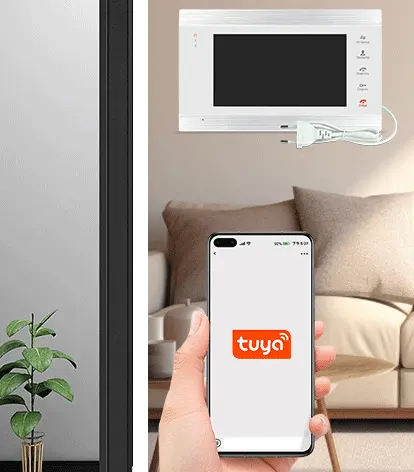01
The Historical Origin of the Intercom Doorbell: A Journey Through Time
2025-02-18
The intercom doorbell, a modern convenience that allows us to communicate with visitors at our doorstep without physically opening the door, has a fascinating historical origin that dates back to the early 20th century. This innovative device has evolved significantly over the years, revolutionizing the way we interact with guests and enhancing the security of our homes. In this blog, we will delve into the historical roots of the intercom doorbell, exploring its evolution and the impact it has had on our daily lives.
The concept of the intercom doorbell can be traced back to the early 1900s when advancements in electrical engineering and communication technology began to shape the modern world. The invention of the telephone had already revolutionized long-distance communication, and inventors and engineers were eager to explore new ways to utilize this technology in everyday life. It was during this time that the first intercom systems began to emerge, allowing for communication between different parts of a building or home.
One of the earliest iterations of the intercom doorbell can be attributed to the work of Lee De Forest, an American inventor known for his pioneering work in radio technology. In 1907, De Forest patented the "Audion" vacuum tube, a crucial component in early electronic communication systems. This invention laid the groundwork for the development of intercom technology, as it enabled the transmission of audio signals over short distances.
As the 20th century progressed, the intercom doorbell continued to evolve, with various inventors and companies contributing to its advancement. In the 1950s, the introduction of transistor technology further improved the functionality and reliability of intercom systems, making them more accessible to homeowners and businesses alike. This era saw the widespread adoption of intercom doorbells in residential buildings, office spaces, and other commercial settings.
The 1970s marked a significant turning point for intercom technology, as advancements in microelectronics and integrated circuits led to the development of more sophisticated and feature-rich intercom systems. These new systems offered enhanced audio quality, expanded functionality, and the ability to integrate with other security and communication devices. As a result, intercom doorbells became an integral part of modern building infrastructure, providing convenience and security to occupants.
In recent years, the intercom doorbell has undergone further transformation with the integration of digital and wireless technologies. Modern intercom systems now offer video capabilities, for example, our factory is the first manufacture of video intercom system to work with tuya app. Wherever or whenever you are, the door gate is under control.
The historical evolution of the intercom doorbell has had a profound impact on our daily lives, enhancing the way we interact with visitors and improving the security of our homes and businesses. From its humble beginnings as a simple communication device to its current status as a sophisticated and interconnected system, the intercom doorbell continues to play a vital role in modern society.
As we look to the future, it is clear that the intercom doorbell will continue to evolve, incorporating new technologies and features to meet the changing needs of users.
In conclusion, the historical origin of the intercom doorbell is a testament to human ingenuity and the relentless pursuit of innovation. From its early beginnings in the 20th century to its current state as a cornerstone of smart home technology, the intercom doorbell has come a long way, shaping the way we interact with our surroundings and each other. As we embrace the future of interconnected living, the intercom doorbell stands as a symbol of progress and possibility, continuing to redefine the way we experience the world around us.



